The samples of knittings executed from front and back loops can be used for creation of any products: from traditional sweaters to fantasy patterns and refined brocade interlacings. By means of alternation of front and back loops you receive the simplest structural knittings. Geometrical grouping of front and back loops allows to create blocks, dagonal, chevrons and rhombuses, any arrangement of front and back loops, allows to create motives. The rapport can repeat for creation of continuous pattern or be used in the form of inserts between which simple knitting is carried out.
Knitting of front and back loops together. From upper side of knitted cloth front loops have equal appearance while each back loop forms small camber. If you imagine plain stitches light, and convex - dark, you will be able to read schemes with ease.
Knitting of loop from back wall. Of new loop from back wall of loop of the previous row are applied by Provyazyvaniye to giving of clearness to structure of sample. From upper side of loop have the form of letter V, diagonals going on the right from below up on the left. In process of further performance of knitting of diagonal emphasize verticals from upper side of knitted cloth. To provyazat front loop from back wall of loop, enter the right spoke from upper side in the direction from right to left into loop from the left spoke, take spoke thread and extend new loop, as usual. To provyazat back loop from back wall of loop, take away spoke a little back and see it in loop from reverse side of work from left to right, take spoke thread and extend new loop, as usual. 
Removal of loop. Removal of loop is its transfer without provyazyvaniye from the left spoke on right. When removal of loop is integral part of pattern of knitting, she usually acts as back, as a result the loop will lie in the same direction as usual front loop. The sample with the removed loops turns out dense and strong.
If the loop is removed also front row as front, and the thread thus remains behind work, on knitted cloth the vertical groove forms.
If the loop is removed back in front row, and the thread remains before work, on cloth the horizontal groove is formed. In back ranks of loop the spendthrift to be removed as back.
If back row matches back loops, and the thread thus is before work, broaches will not be visible from upper side; if the thread remains behind work, broaches will be visible from upper side. To remove loop in front row with thread behind work, enter into loop the right spoke as when knitting back loop, then remove it with left on the right spoke. Not to obkruchivayta thread round spoke — the new loop is not formed. That in front row to remove loop with thread before work, leave thread from upper side of cloth, enter the right spoke into loop as for provyazyvaniye of back loop, then remove it with left on the right spoke. Bring thread to reverse side and knit the following loop.
Pearl knitting. The odd number of loops is gathered. The rapport consists from of the same kind. In each row the first loop matches front, following - back the last loop is carried out the front. If the even number of loops is gathered, the rapport of pearl knitting consists of two rows.
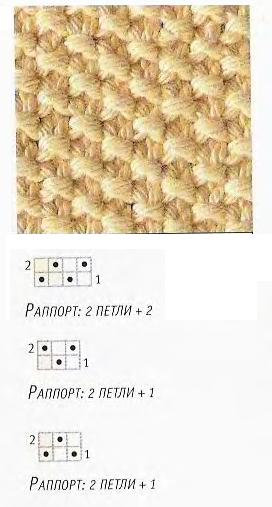
Pattern hems. For knitting of patterns with the admission of loops any number of loops, both even, and odd can be gathered. By Chulochny knitting and the return chulochny knitting any number of ranks can be executed. This cloth stretches in width and contracts down. 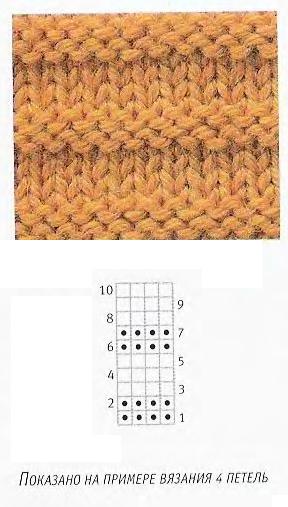
Pattern from small blocks. Samples from the alternating blocks of chulochny knitting and return chulochny knitting can be executed from any quantity of loops and ranks. Samples match blocks taking into account the same control sample, as samples of chulochny knitting. Small blocks are similar to squares in spite of the fact that the number of ranks in each of them exceeds quantity of loops. 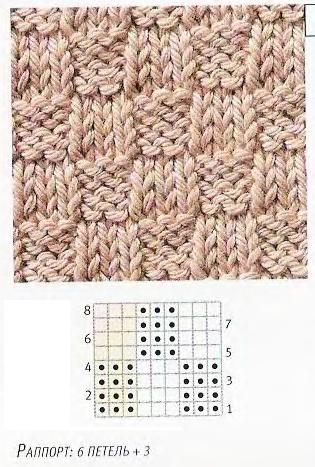
The broken-off blocks. Addition of scar of platochny knitting to blocks from platochny knitting does cloth to more expressive in comparison with sample of equal blocks, and thus to execute it very easily.
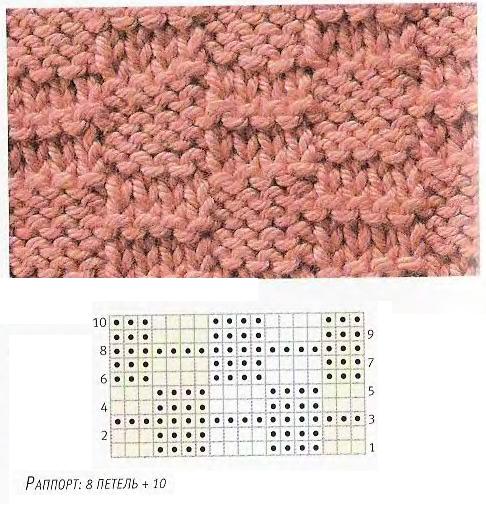
Double pearl knitting. The rapport of the double pearl knitting which is also called by the Irish knitting usually consists of four rows. For knitting of sample both the even, and odd quantity of loops can be gathered. Knitting of row begins with front or back loop, as at usual pearl knitting. Performance of the double pearl knitting beginning with back loop as it gives the chance to receive accurater corner is shown in the scheme. If double pearl knitting is carried out after elastic band (1 izn., 1 persons.), in this case it start knitting with front loop, as in the third row of the scheme. Double pearl knitting — is practical knitting as for calculation of loops and ranks it is possible to use the same values, as for chulochny knitting. It does it by ideal pattern for performance of textural elements against chulochny knitting.
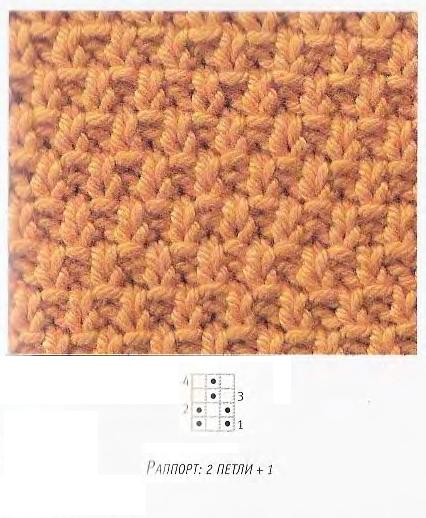
Small rhombuses from pearl knitting. This pattern of knitting consists of the small, executed by double pearl knitting rhombuses against chulochny knitting. Use this pattern for knitting of the whole product, it is also possible to carry out only 3 — 4 rapports for textural insert.
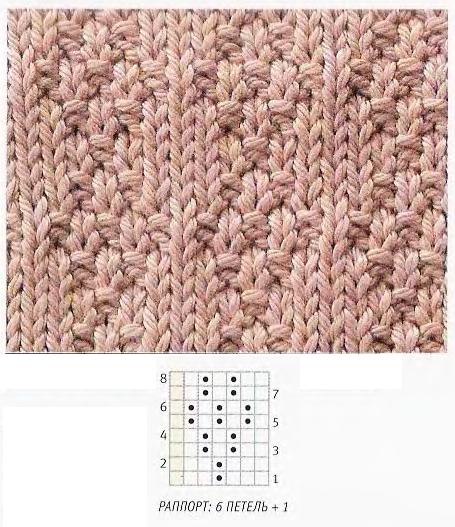
Pattern with grid. The basis of this pattern is made the platochny and chulochny are viscous. To execute it very easily. 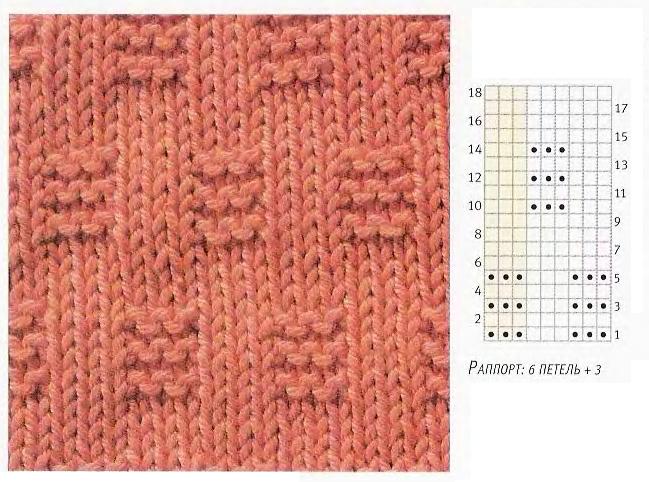
Rhombuses from platochny knitting. Despite the seeming complexity of drawing caused by big rapport, actually, it is rather simple as consists of combinations of front and back loops in front ranks while all back ranks match back loops.
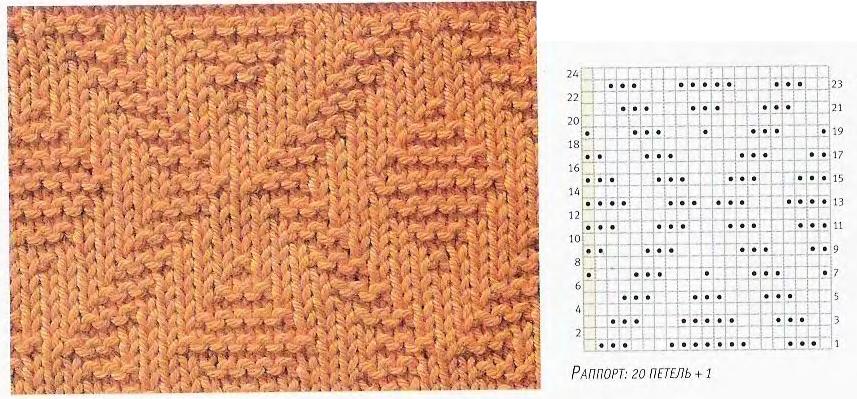
Small squares. Knitting of small squares of chulochny knitting from back walls of loops of the previous row gives to blocks expressive clearness. 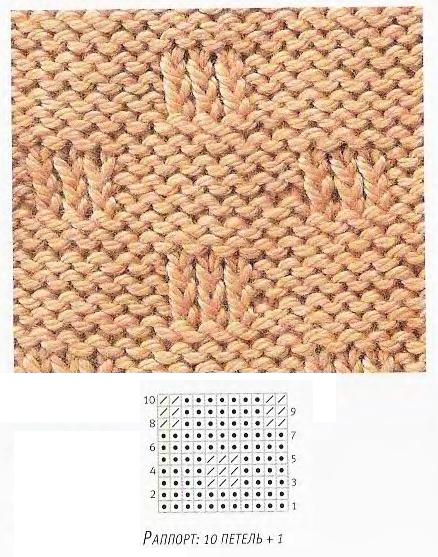
The turned diagonal. You can carry out chulochny knitting without crossing of loops, however in this case diagonal strips will be less accurate. For performance of the strips deviating to the right turn the scheme of pattern.
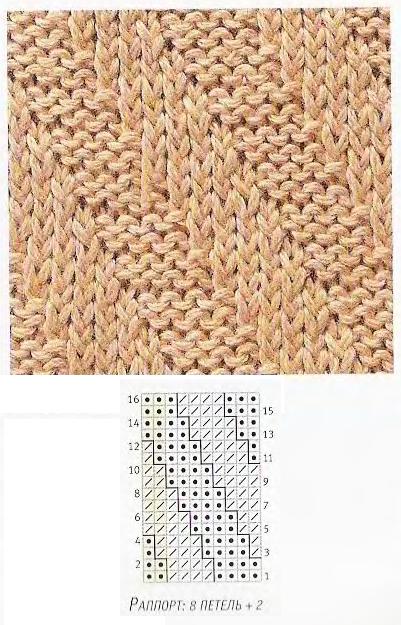
Chevrons. When diagonals match diversely, chevrons are formed. Performance of loops does chevrons of back walls more convex and more refined.
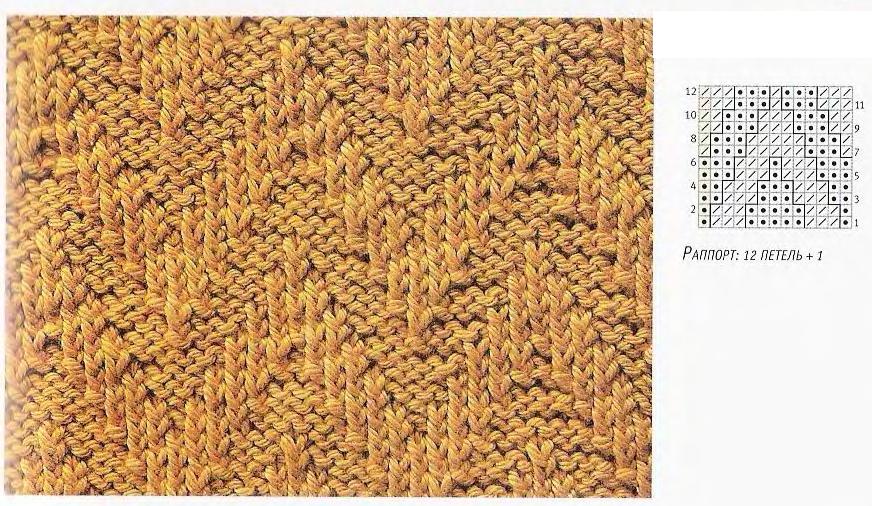
Pattern in chessboard order. Pay attention as small blocks from the loops executed from back wall contrast with the chulochny knitting surrounding them.
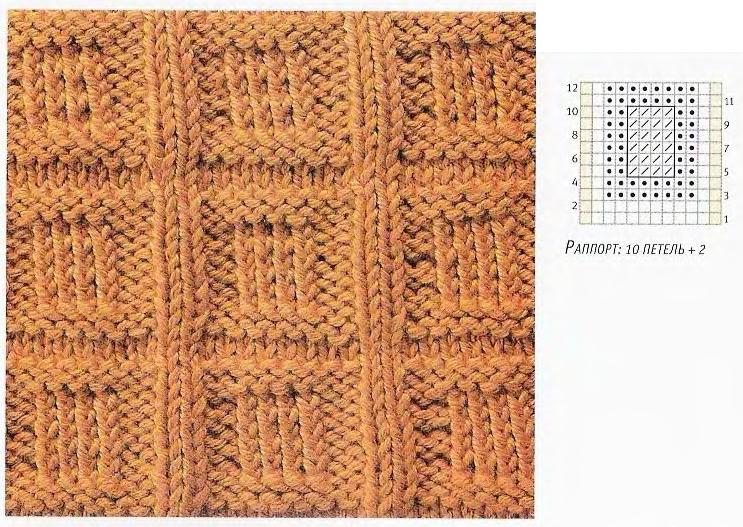
Patterns of hearts and chevrons. Simple patterns from combinations of front and back loops are usually used when knitting sweaters. The patterns from diagonals, chevrons and hearts given in this chapter can be used as separate panels. The panel of chevrons is rapport from 10 rows, therefore, it precisely holds in rapport of pattern of hearts which consists of 30 rows. Small diagonals repeat through 4 rows, therefore, you should provyazat 60 rows before there is exact repetition of pattern.
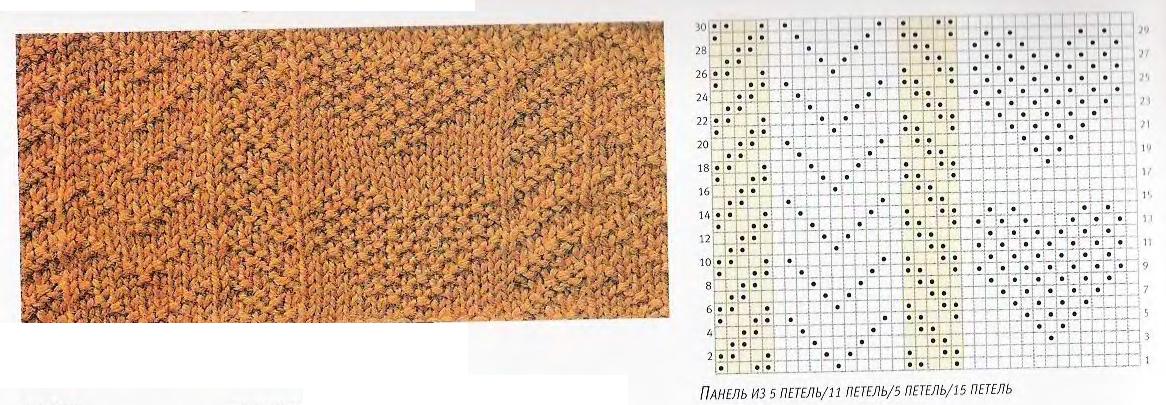
Tree and flags. Very interesting at connection together of panels of knittings to watch creation of the different outlines arising between motives.
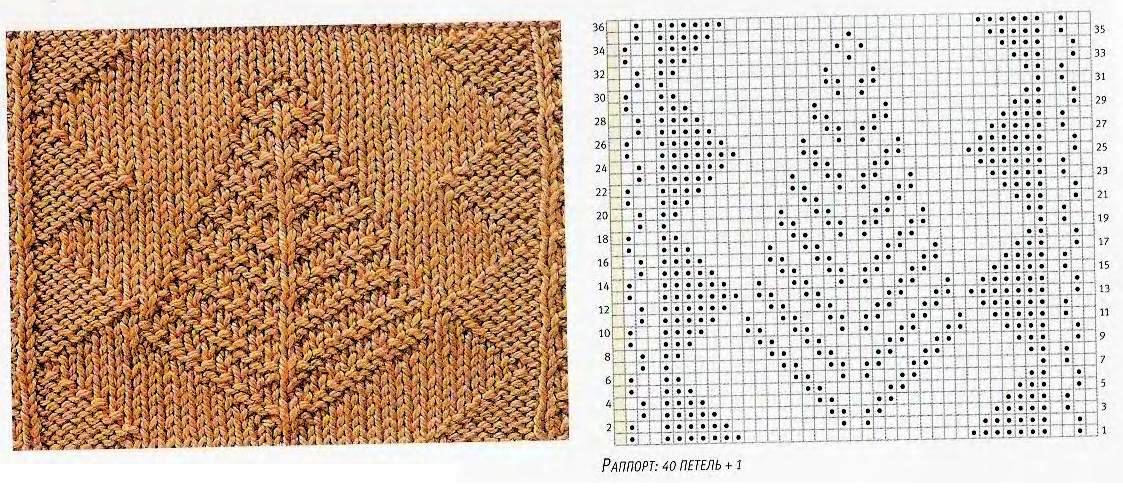
Rhombus and network. Rhombuses from pearl knitting so well fit into structure of sample because their form is reflection of the rhombus formed by the crossing lines of network.

Daisy pattern. Front and back loops can be applied to creation of natural motives, the play of light on surface of knitted cloth is used for giving of clearness to drawing. If you want that the daisy has been inclined to the opposite side, copy drawing on graph paper in the opposite direction. To execute daisy with smooth petals on the textured background, you only will need to trade places front and back smooth surface. 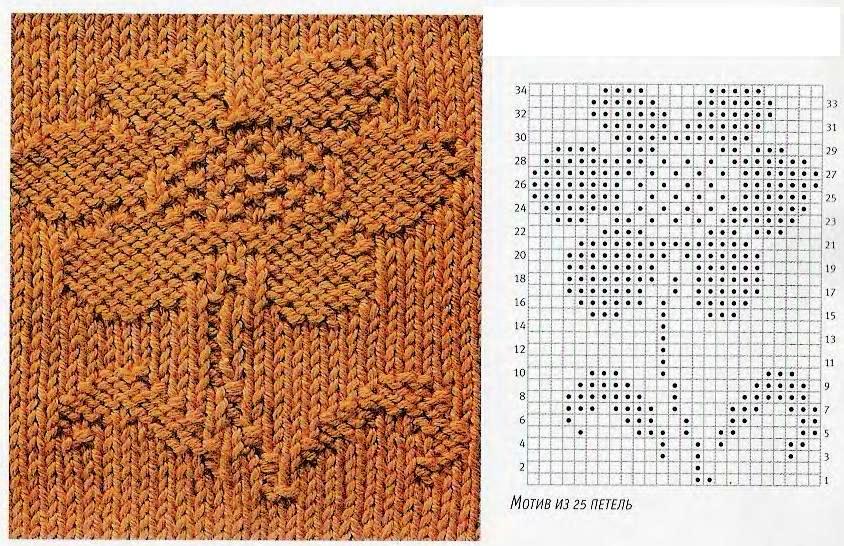
No comments:
Post a Comment